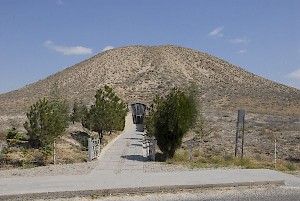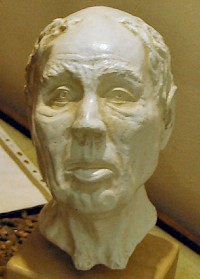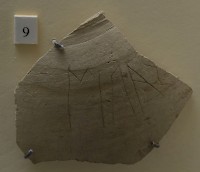Midas
Q308398Midas: king of Phrygia, best known from Greek legend, but perhaps also mentioned in cuneiform sources.
Legend

There are several legends about the Phrygian king Midas. One of these is that he once captured Silenus, the perennially drunk compagnion of the god Dionysus, by drugging a well with some wine.note According to Aristotle and several later authors, Silenus told him that for humans, it's best not to be born, while the second best is to die soon.note
A second, and probably better known, legend tells us that Midas helped Silenus to return to Dionysus, and was therefore awarded the right to make a wish. The Phrygian king famously asked the gift to convert everything he touched into gold - a wish he soon regretted when he discovered that he would soon die of starvation. Dionysus therefore ordered Midas to wash his hands in the river Pactolus, which carried, ever since, gold dust with it.note
Another well-known legend is about Midas' unfortunate judgment in a musical contest between the gods Pan and Apollo. All judges agreed that the last-mentioned has won, but Midas supported Pan, and an angry Apollo changed the king's ears into donkey's ears. Ashamed, Midas always wore a turban, but his barber discovered the secret. Because he wanted to talk about it, he dug a hole, and whispered the secret to the soil. When later the grain was ripe, it whispered "Midas has donkey ears".note
These are the main stories. Among the minor ones is an anecdote, told by the poet Callisthenes and relayed to us by ps.-Plutarch, that once, in Celaenae, there was a large chasm in the earth. King Midas received an oracle that he ought to throw his most precious possession into the hole, but even all his gold was insufficient. Then, his son Anchurus realized that life itself is the most precious thing on earth, mounted his horse, and jumped into the abyss.note (This story is better known from the Lacus Curtius in Rome.)
History

Several sources can be used to reconstruct the historical figure behind the legend: a Phrygian king. In the first place, there's a remark by the Greek researcher Herodotus of Halicarnassus, who mentions a golden throne sent to Delphi by Midas.note In the second place, there's a remark by the geographer Strabo that Midas committed suicide by drinking the blood of a bull after a defeat against the Cimmerians.note A date is offered by the Chronicle of Jerome, who says that Midas died in the first year of the twenty-first Olympiad, i.e., 696/695. The accession is mentioned in the third year of the ninth Olympiad (742/741).
This date is incompatible with the date of the "tomb of Midas" that has been excavated in Gordium. It can dendrochonologically be dated to 740 BCE (the year in which the wood was cut). This is too early to make it the tomb of the famous king; either the chronicler is wrong, or the archaeologists have given the wrong name to the tumulus.
However, if we assume that the tomb was built for Midas' father (Gordius, according to legend), everything fits perfectly: wood cut in 740 closely matches the year of Midas' accession as given in Jerome's chronicle, 742/741.
Some anecdotes look a bit suspicious, like the statement by Diodorus of Sicily that Midas founded the cult of Cybele in Pessinus.note This story probably has its origin in a combination of two pieces of information ("that goddess is from Phrygia, that king is Phrygian, therefore, Midas must have had something to do with the deity"), but it cannot be discarded. The fact that it looks untrue does not mean that it is untrue. The same is true for Pausanius' remark that Midas founded Ankara:note the possibility cannot be excluded.

Finally, it must be mentioned that a sherd, found in Gordium, records the name "Midas". Although it is unlikely that this refers to the legendary king, it proves that the name is indeed Phrygian.
Mit-ta-a of Muški
There is a very intriguing clue in contemporary Assyrian records, which refer to a Mit-ta-a of Muški. This king cooperated with the rulers of Tyana, Karchemish, Gurgum, and Malida against the Assyrian king Sargon II, but was attacked by the Cimmerians. He is mentioned several times in Sargon's Annals between 717 and 709, the year in which he was forced to ask for help from Sargon. This again fits the regnal years given by Jerome.
There is a problem, however: the name Muški already appears in texts from the thirteenth century BCE. Worse, the Moschi are also mentioned as a nation that lived in Colchis.note On the other hand, in Mesopotamian texts, very ancient names could be reused to describe newcomers that lived in more or less the same direction - for example, the name "Hanaeans" first referred to a kingdom on the middle Euphrates, but later to the Macedonians. Something similar may have happened to the word Muški, because the correspondence between Mit-ta-a and Midas is pretty close: both lived in the fourth quarter of the eighth century and both fought against the Cimmerians.